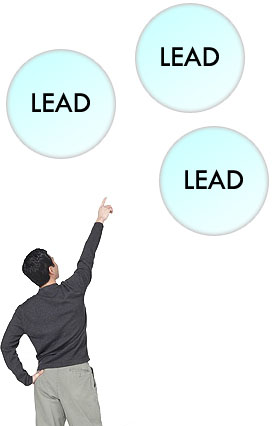 If you ask a sample of 100 real estate professionals what’s the most important thing their website could do for them, we are willing to bet that over 90% of them would say “generate leads that result in actual transactions.” While we don’t have enough room in this post to tell you how to sell your services to prospective clients once they are in the door through a form submission, we can suggest some lead generation strategies and plans that will bring your stagnant contact list to life.
If you ask a sample of 100 real estate professionals what’s the most important thing their website could do for them, we are willing to bet that over 90% of them would say “generate leads that result in actual transactions.” While we don’t have enough room in this post to tell you how to sell your services to prospective clients once they are in the door through a form submission, we can suggest some lead generation strategies and plans that will bring your stagnant contact list to life.
Create Real Estate Landing Pages
If your website is the authoritative resource for real estate in your area, landing pages are the advertisements you use to highlight the specific offers that your website can fulfill. By creating a page that, for example, offers customized home listings updates sent via email, you will have the perfect place to send anyone who may be receptive to this offer. Landing pages usually have prominently displayed contact information and lead capture forms so that those visitors who are interested in acting immediately upon your offer can do so, right there and then. It’s not uncommon to build multiple landing pages to target different demographics, developments, and offers.
Drive Traffic To Those Landing Pages
Now once you have these lead generation pages, there’s a lot you can do with them. Start linking to them from your email signature, print and online newsletters, send out postcards highlighting their specific offers (this actually makes it easy to track the results you get from mailings), and also consider ad spends in search engine marketing, as well as featured placement on heavily trafficked real estate and local interest websites. Steering the visitors your website receives to landing pages greatly increases the chances that they will convert into a lead for you, provided that what you are offering on the landing page is valuable and you are not asking for too much contact information in return for it.
Integrate Lead Gen Forms Throughout Your Website
Just because landing pages are more efficient in converting real estate traffic than a more general page (like your homepage) doesn’t mean that there aren’t going to be opportunities to convert traffic on the website itself. That why you should integrate capture forms throughout the website, wherever it makes sense. There are two types of capture forms: those that act as barriers to the tools on your website that your visitors will most want to utilize, and those that deliver upon a specific “call-to-action.” Barrier pages are usually a turn-off to visitors, and can cause bounces from your site unless what is on the other side of the form is very valuable (like access to proprietary tools you’ve built, insider information, or as it still works in some markets, MLS access. Specific “call-to-action” forms should be used to attract the attention of people requesting relocation information, buyers wanting a custom home search performed for them by a real estate professional, and listing prospects who are looking for a home evaluation. These lead generation forms will help supplement the inquiries you receive through landing pages, and typically are the most steady source of leads generated through natural search traffic (or SEO) campaigns.
Build Your Sales Content… Around Conversions
All great real estate websites have factually solid, unique, and interesting text content. When you write the content for your website, or hire someone to do it for you, don’t ever lose sight of the fact that words themselves can often be strongly persuasive. Every piece of writing on your site should ultimately assist your lead generation goals. Commonly used and successful writing tactics for conversion include interspersing relevant offers (and sometimes brief contact forms) in the middle of your content, mentioning your phone number and email address at the end of every page, and using whatever topic you’re writing about to occasionally draw the attention of the reader back towards how you can assist them.
Encourage Social Interaction
If your landing pages, contact forms, and other implemented strategies are not generating enough leads, you should start working freely available social networks such as Facebook, Twitter, and YouTube. Every friend you make on these sites could be a potential referral! As these sites continue to develop as search portals (each has their own search capability), there will be a larger demand for real estate professionals to be easily found on these sites in that fashion. So if you create a profile on these sites as a Realtor, and become a regular user of these networks, you may find prospects who are receptive to your marketing messages. Just make sure you fully understand how social marketing works for real estate before you dive in head-first!
If you go right down the list and implement these recommendations of ours, your real estate website will no longer be a lead generation “dud.” Stay tuned to Real Estate Marketing Blog for more helpful tips and advice.